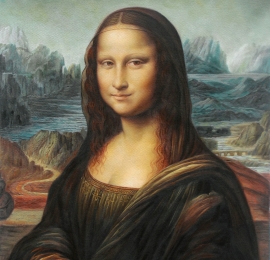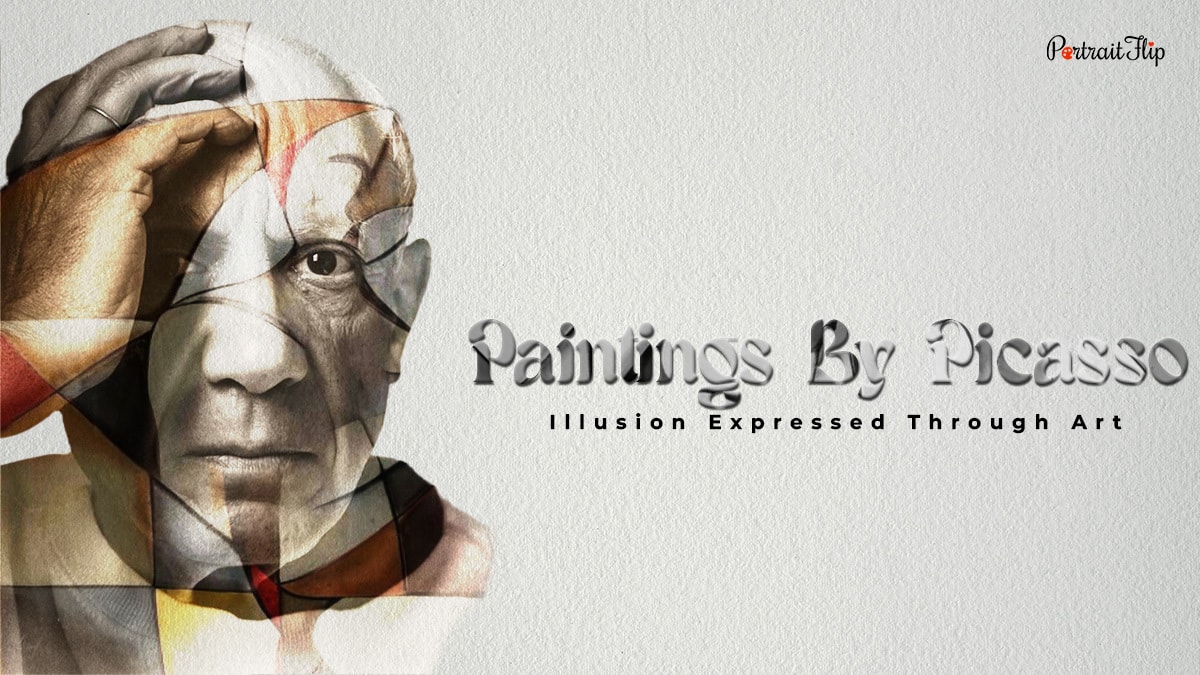While talking about art, how can we forget Pablo Picasso?
Pablo Picasso was not only an amazing painter but also a printmaker, a ceramist, and a sculptor!
A famous portrait painter who experimented with his brushstrokes to create some unique and enchanting paintings.
In his life, he witnessed his fair share of happiness and depression, and whatever he learned, he displayed it through art!
Considered one of the leading Spanish artists, Picasso has had the color palette in his hands since a young age.
Not only this, but he also founded the Cubism movement with his friend and famous painter, Georges Braque.
Being one of the most decorated artists in history, Picasso mastered the oil painting medium.
Nowadays, his artwork can be seen in some of the most prestigious museums and art galleries in the world.
His work is divided into various periods of time, through which he depicts his mental health and personal life as well.
So, without further ado, let’s dive into the pool of paintings by Picasso!
Suggested Read: Famous French Artists
Table of contents
Paintings from the Blue Period
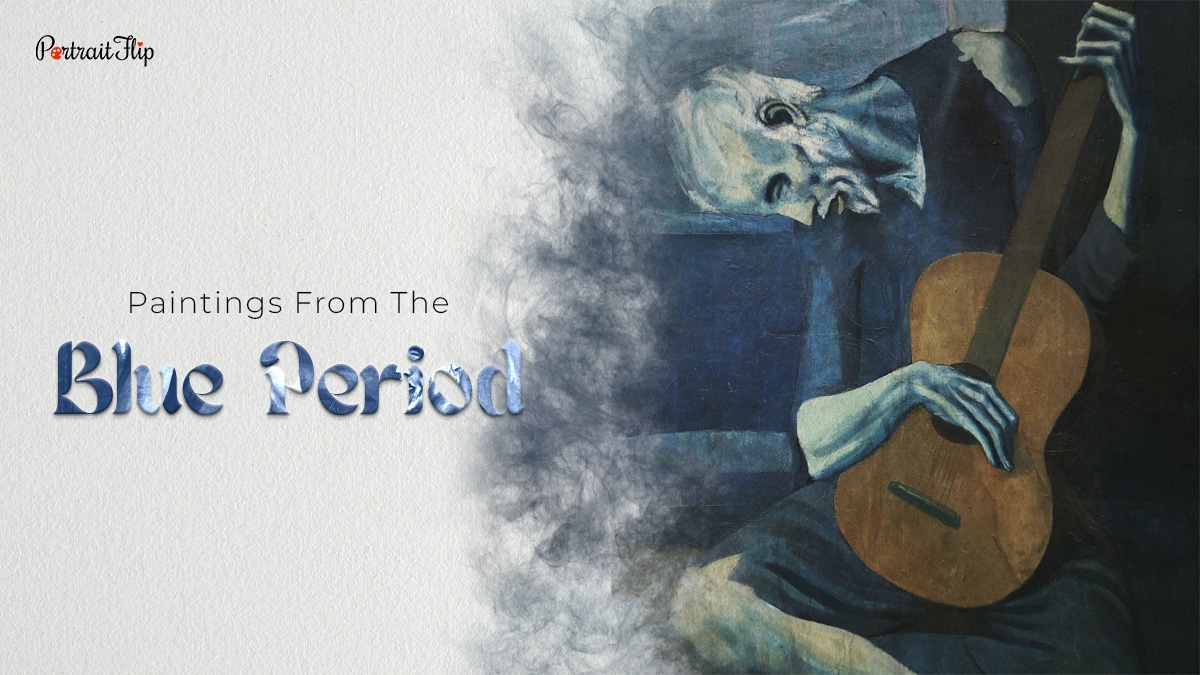
This period in Picasso’s creation lasted from 1901 to 1904.
When Picasso started painting during this period, the art that he created depicted the loss of loved ones.
Elements of mourning and grief were prominently found in his art during that time.
When Picasso’s realism was on the verge of ending, that’s when he transitioned into the blue period.
We can observe that he hasn’t used warmer tones in his paintings. It is believed that the main reason behind this is that he was suffering from depression.
He was devastated that his paintings were not attracting any buyers or art dealers, and this was the most difficult and challenging period of his life.
Take a look at these famous blue paintings and see how Picasso’s life was going downhill.
1. La Soupe
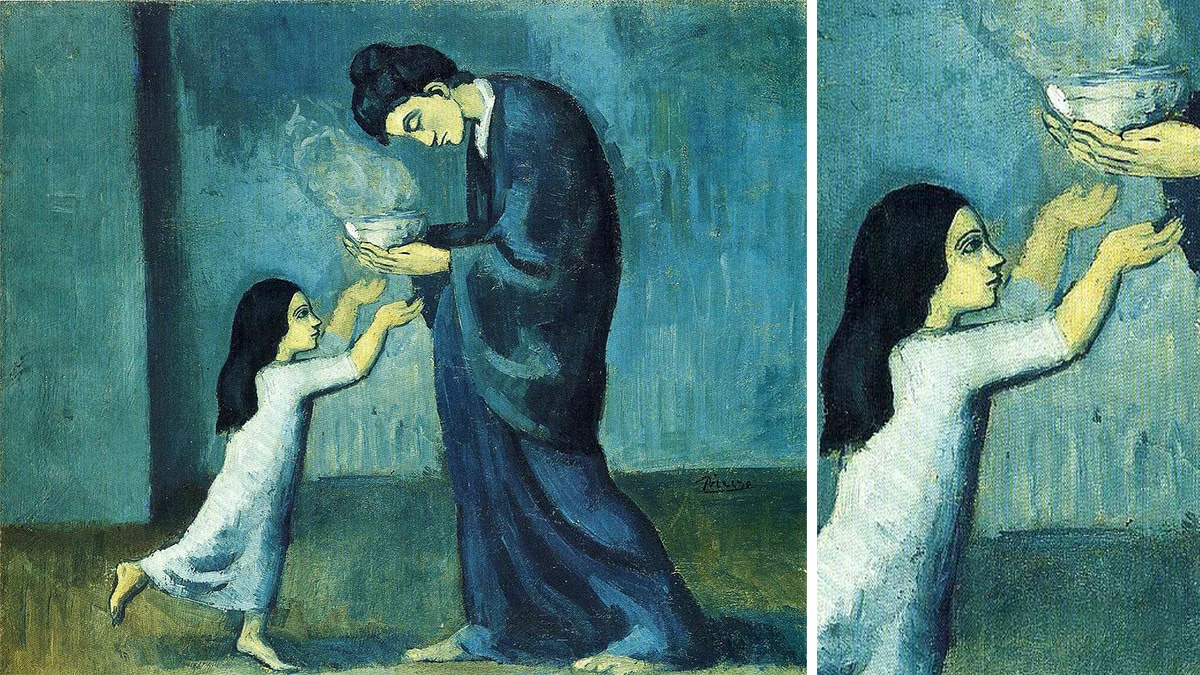
One of the most famous paintings by Picasso from the Blue Period has a dual perspective.
And do you know why?
At first glance, this painting by Picasso portrays a beautiful bond of love between a mother and her child.
And on the other hand, it raises a question in the viewer’s mind while taking a look at the painting is whether the woman is offering or receiving the soup from the child.
An ambiguous and antique painting that showcases a mother offering her child a bowl of soup.
The only thing that gets me into confusion is the meaning behind this painting, as the woman is clearly aged and is weighed down.
In this painting, Picasso has depicted the phase of early 1901 in which many artists and their families were starving.
This painting is now safely housed in the Art Gallery of Ontario, Toronto, Canada.
2. La Vie
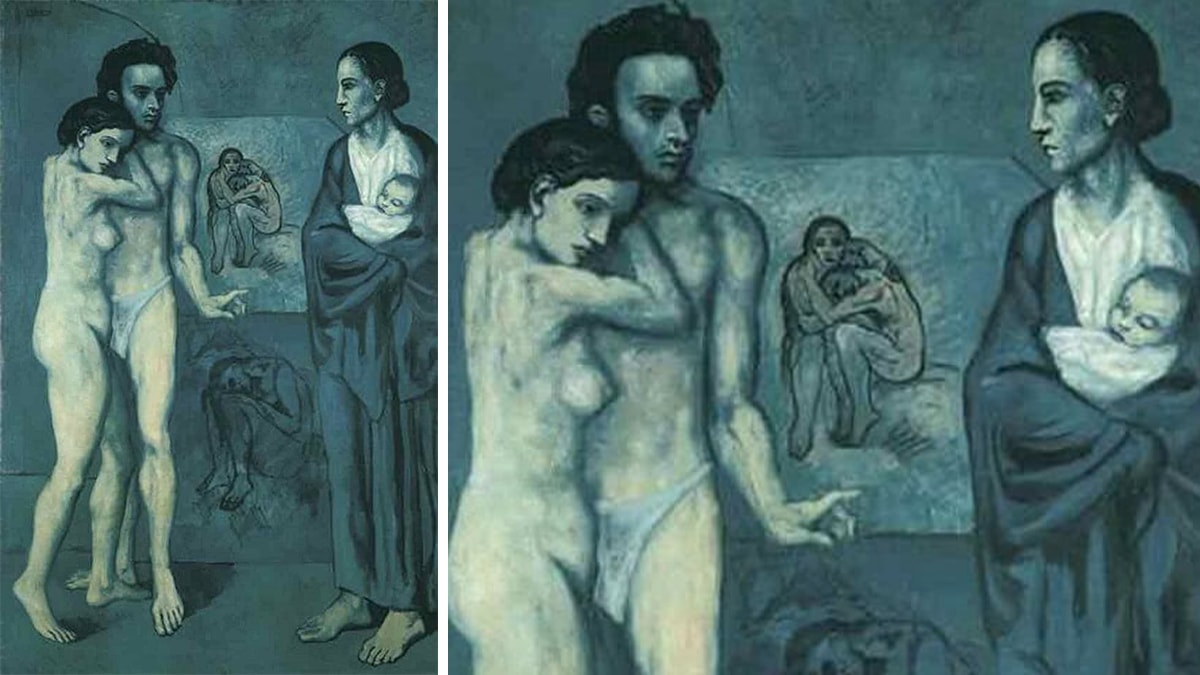
This mesmerizing painting was made by Pablo Picasso during his Blue Period,” when he was actively working in Barcelona.
Picasso’s blue period began soon after the loss of his dearest friend Casagema in 1901.
Picasso was inspired to create this artwork after the loss of his dearest friend, Carlos de Casagemas.
If the viewers take a closer look at the background of the painting, they can easily understand what the painting means.
Carlos killed himself after being rejected by Germaine. She was a Persian woman with whom Casagema had fallen in love.
Germaine wasn’t interested in Casagema romantically; she broke his heart, so Casagema took revenge and committed suicide.
Amid all of this happening, Picasso was just a twenty-year-old young boy struggling to make ends meet.
So he decided to use only blue, green, and gray shades to create artwork.
That’s why all the paintings he created in that phase were known as the works of the Blue Period.
3. La Gourmet
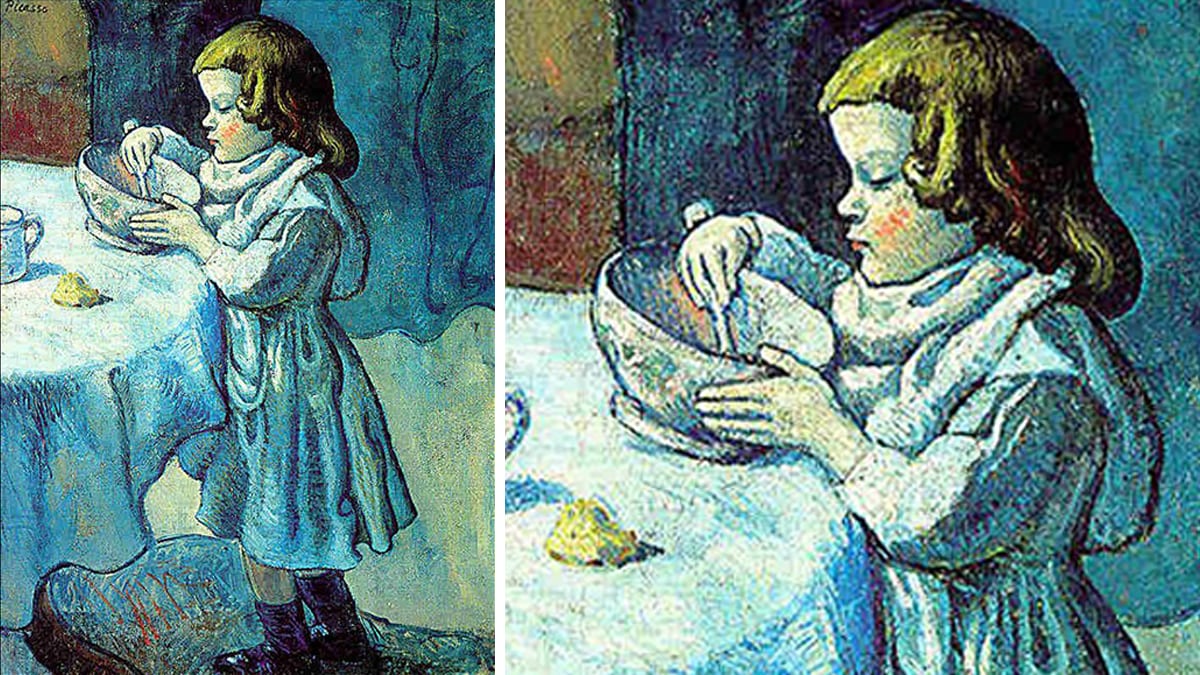
This painting by Pablo Picasso literally means “lover of food. In this painting, Picasso has depicted a young girl who is trying to scoop out the last bit of food.
She can be seen scraping the leftovers from a bowl, and she is also tip-toeing to the table as she cannot easily access the food.
The table is covered with a white linen tablecloth, and it is barely reaching the girls’ chest.
Picasso has used the color codes of cobalt, blue, and turquoise.
And it is Picasso’s most famous painting from the series of paintings from the Blue Period.
Focusing on the girl in the painting, La Gourmet, we can easily see that she has a snub nose and pink cheeks.
A shadow can be seen protruding from under the table, and Picasso has painted it a dark shade of brown.
Also, on the left corner of the painting, you can see a yellow painted element, and you can see that Picasso has signed the painting.
Paintings from the Rose Period
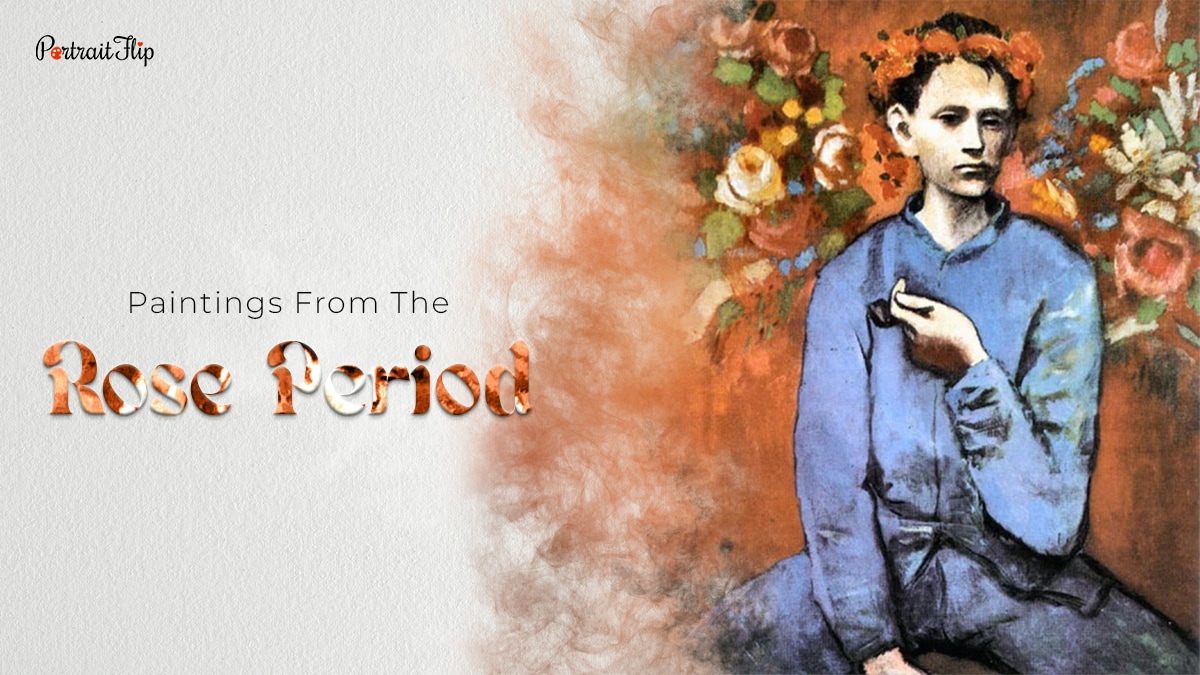
This phase or period of Picasso’s life began after the year 1904, when he moved to Paris.
In this period, he bloomed out of his depressing blue period and started to depict happy and colorful paintings.
One of the reasons he is considered happy is that he was in a relationship with Fernande Oliver.
She helped him overcome his depression, sadness, sorrow, and grief.
He started focusing more on painting the positive side of the world and cheerful themes.
Picasso often used clowns or carnival performers as his muse for his paintings.
1.Family of Saltimbanques
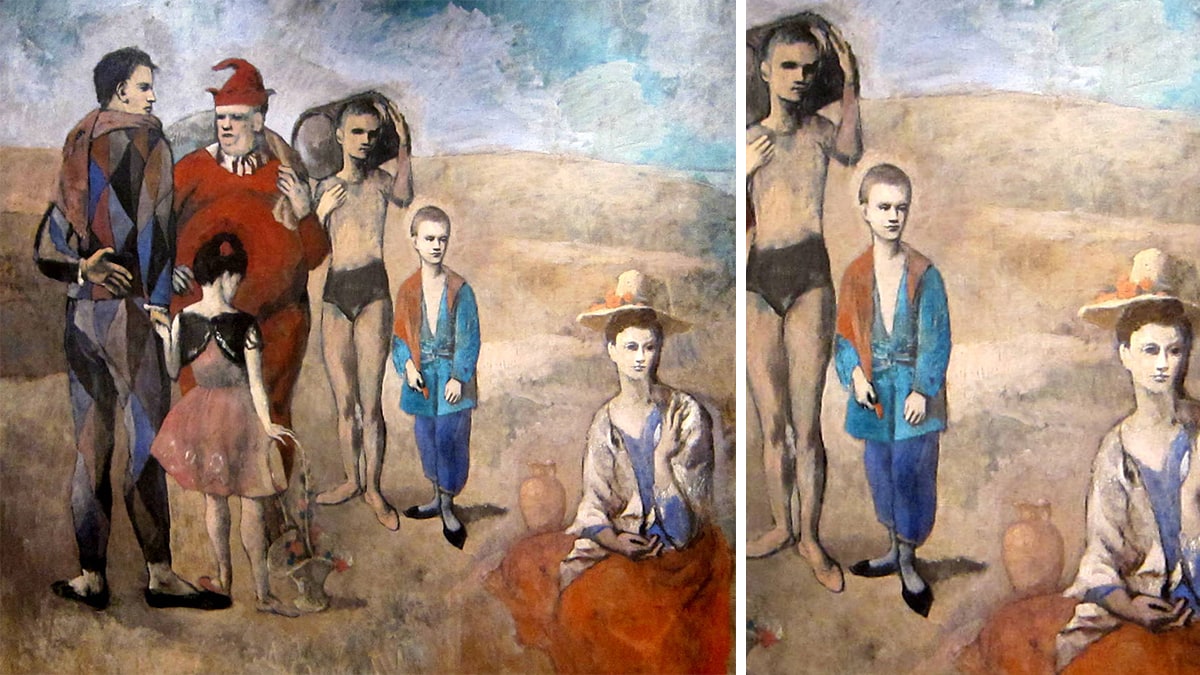
This painting by Picasso is one of the famous paintings from his “Rose Period,” also known as the “Circus Period”.
He created this masterpiece soon after moving to Paris from Barcelona at a young age in 1904.
This painting depicts six saltimbanques, commonly known as circus performers.
The painting was made when he was in Paris, alone and depressed, living in a studio apartment.
He was surrounded by artists from different genres, who encouraged him to create more pieces of artwork.
In one of his biographies, the specific author mentions that he smoked a lot of opium during his depression phase.
But later, when he started painting with red hues and undertones, he started feeling positive about life.
The discovery of Saltimbanques made him learn life’s secrets, like how one should keep moving and forget stuff that has bothered them.
Saltimbanques were none other than a group of six people who constantly traveled to perform their circus set.
This painting by Picasso can be viewed in the collection of the Chester Dale Collection, National Gallery of Art, Washington, D.C.
2. Le Acteur
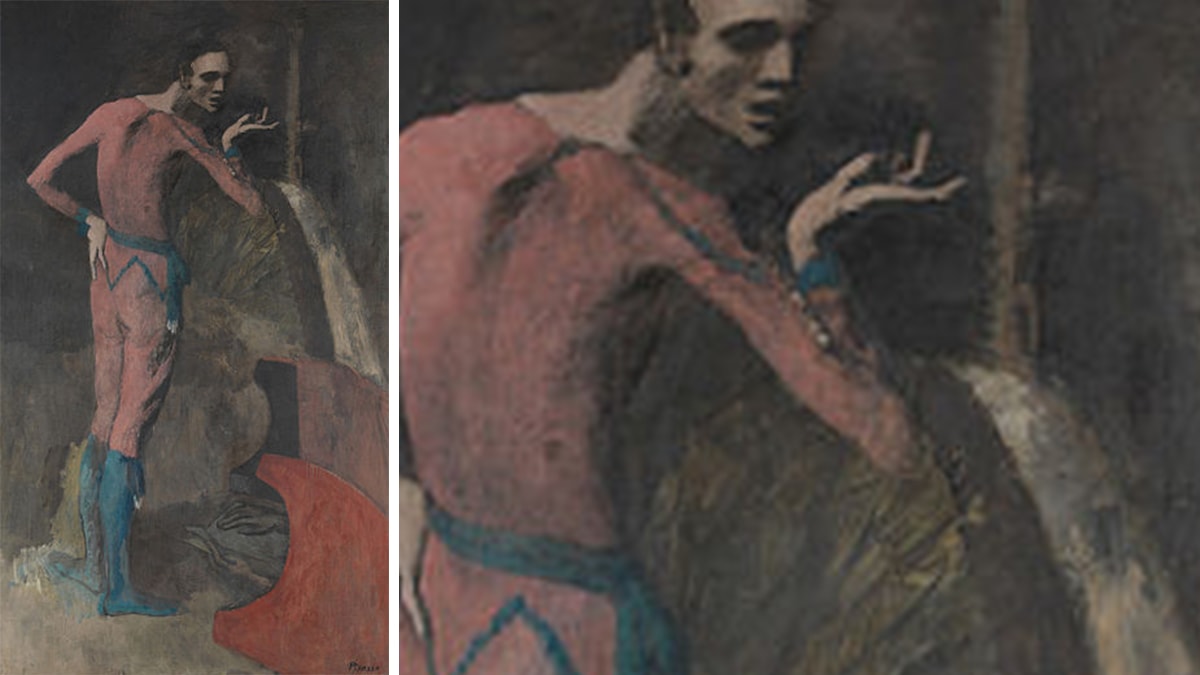
This painting by Picasso is a symbol of art. But it also signifies negativity as it displays the expression of haunts, and one can evidently see it from Saltimbanques being featured in the artwork.
Picasso has painted the man depicted in this painting in an abnormally elongated way.
His head is twisted in a way that is practically impossible.
But, given the fact that he was a performer in a circus, it makes it easy for him to flexibly twist his neck.
The artist completed this painting on New Year’s Eve 1904.
This painting by Pablo Picasso can be viewed at the Metropolitan Museum of Art.
3. Garcon a La Pipe
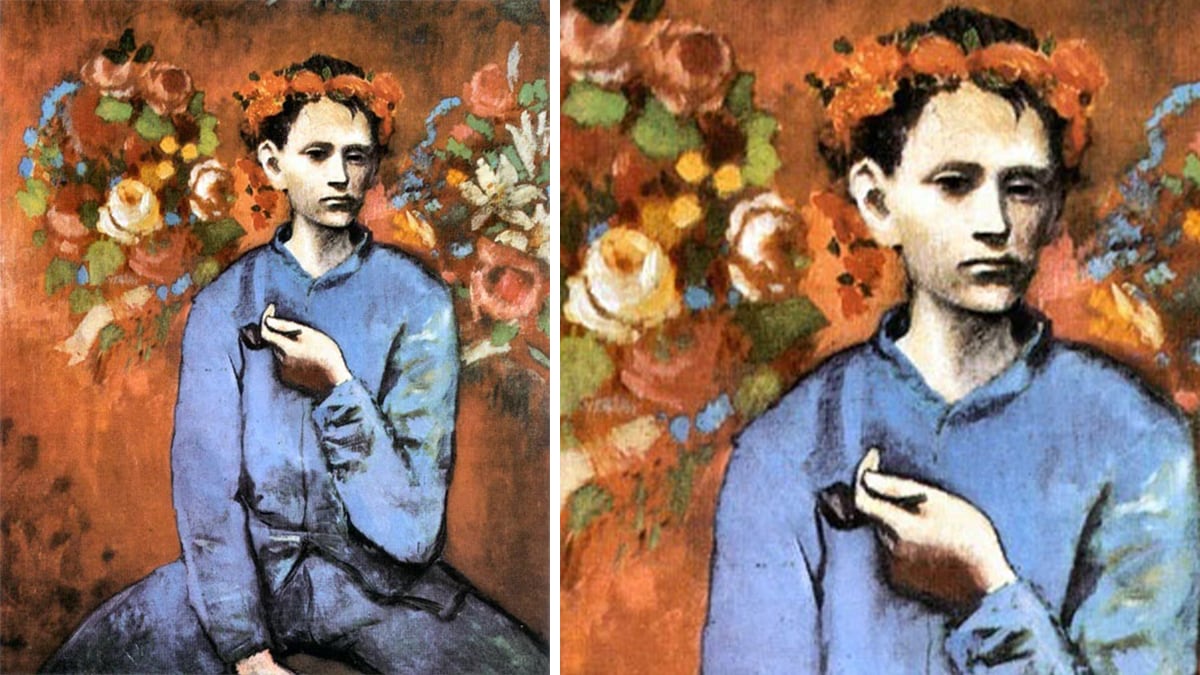
This artwork by Pablo Picasso is an oil on canvas painting that he made in 1905.
He created this painting when he moved to the Montmartre area of Paris, and it falls into the collection of famous Picasso paintings.
The subject of this painting is a boy named “P’tit Louis,” who was a Parisian adolescent boy who can be seen holding a pipe in his hand.
He can also be seen sporting a garland over his head and with floral decorations on his sides.
Unfortunately, the subject of his painting died at a very young age. Picasso depicted the young boy as an evil angel.
This painting conveys conflicts between the imagery of innocence and experience.
This artwork is listed under some of the world’s most expensive paintings of all time.
As a surprise, it is the fifth-highest-selling painting by Picasso at Sotheby’s auction and was sold for $104 million on May 5, 2004.
This painting now decorates an anonymous private collection.
Paintings From the Cubism Period
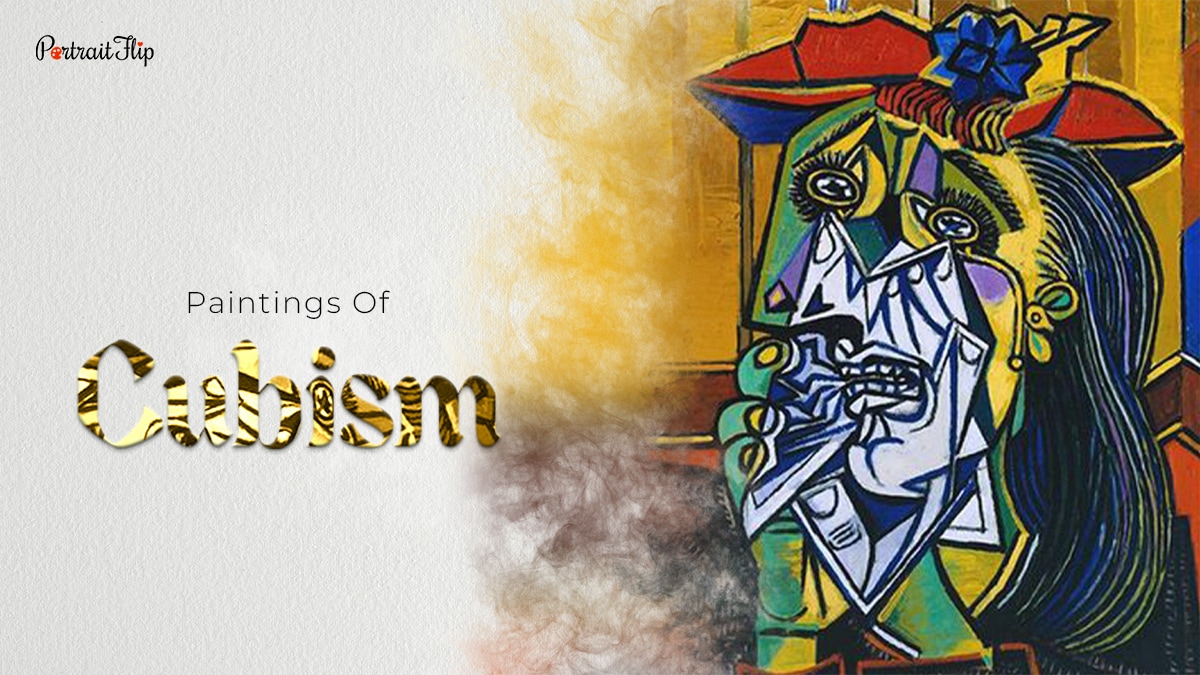
As soon as the phase of the Rose period ended for Picasso in 1909, he became friends with fellow artist Georges Braque.
Georges Braque was one of the most famous French artists, and he, along with Picasso, started the Cubism movement.
They were both focused on the presentation of their ideologies through abstract art.
This gave a redirection to Picasso’s artworks, which acted as a line of difference between reality and imagination.
During this period, Picasso’s art faced a lot of criticism as well.
When they started creating their artworks, it gave birth to cubism and, moreover, inspired other artists to start painting.
1. Les Demoiselles d’Avignon
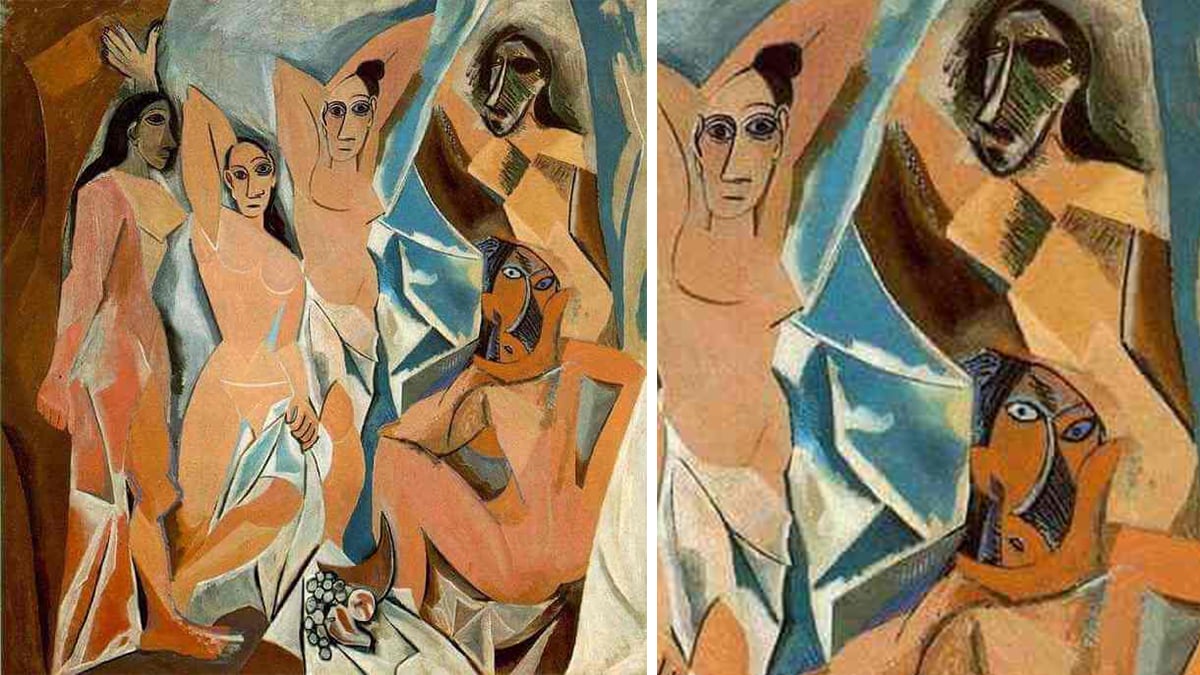
Originally titled “The Brothel of Avignon,” it was created by the Spanish artist Pablo Picasso in 1907.
This painting awed the viewers with its traditional composition and perspective.
This painting depicts five naked women who are believed to work in the brothel and are sitting outside.
Picasso created the flat, patterned faces of the women, which were inspired by Iberian sculpture and African masks.
This painting by Picasso is a proto-cubist work and is widely considered to be extravagant in the early development of cubism and modern art.
Picasso painted a melon and a bunch of grapes in the center corner of the frame, which portrayed his skills in symbolism.
This depicted how Picasso used the skill of still life.
This painting now hangs at the Museum of Modern Art. Acquired through the Lillie P. Bliss Bequest, New York City.
2. Guernica
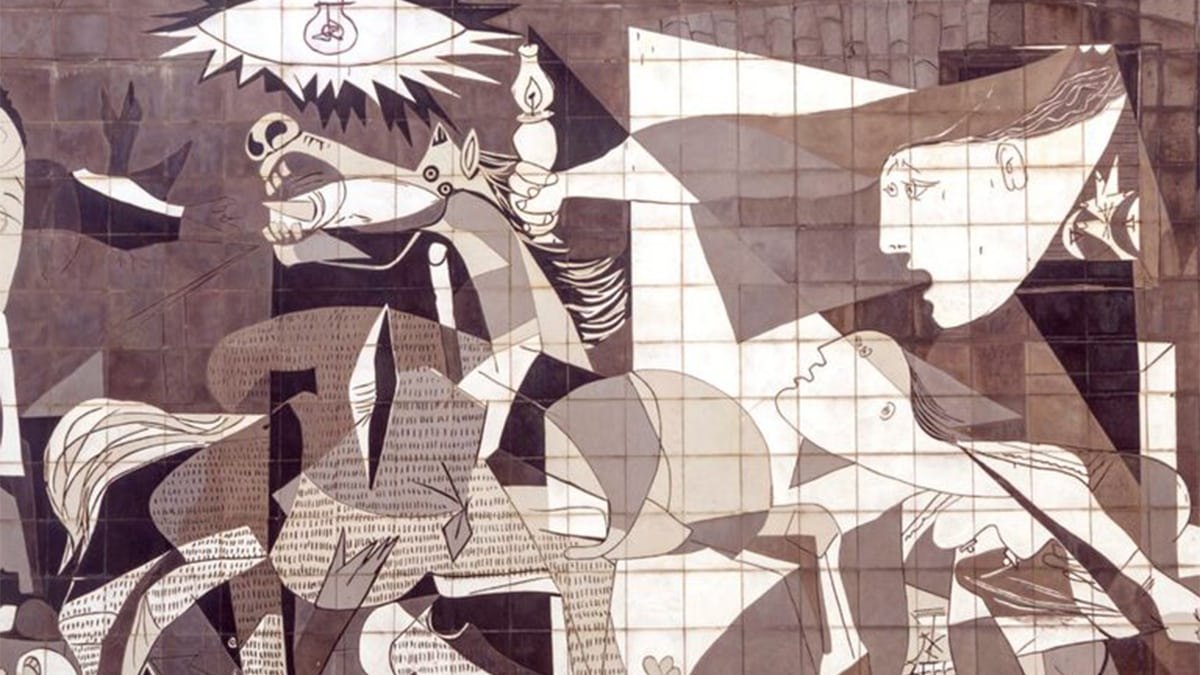
Guernica is Picasso’s most influential and famous work, which made a powerful political statement.
He completed this painting in 1937. It was an immediate reaction to the bombing carried out by the Nazis.
The practices took place in the Basque town of Guernica during the Spanish Civil War, and they portrayed the sufferings of the people living there.
This masterpiece has become a monumental reminder of the lives lost in the war and the families it affected.
This painting is 11 feet tall, and if you look at the subjects that Picasso has painted, it is a scene of grief with the use of symbolism.
A woman can be seen grieving with her dead child in her arms.
In the corner, a dark wall with an open door defines the right side of the room.
Picasso has painted a series of animals in this painting, which depicts the cultural shift and also digs deeper than just a few structures of animals.
This painting, which was indeed a necessary piece of art, now hangs in the Museo Reina Sofia, Madrid, Spain.
3. The Weeping Woman
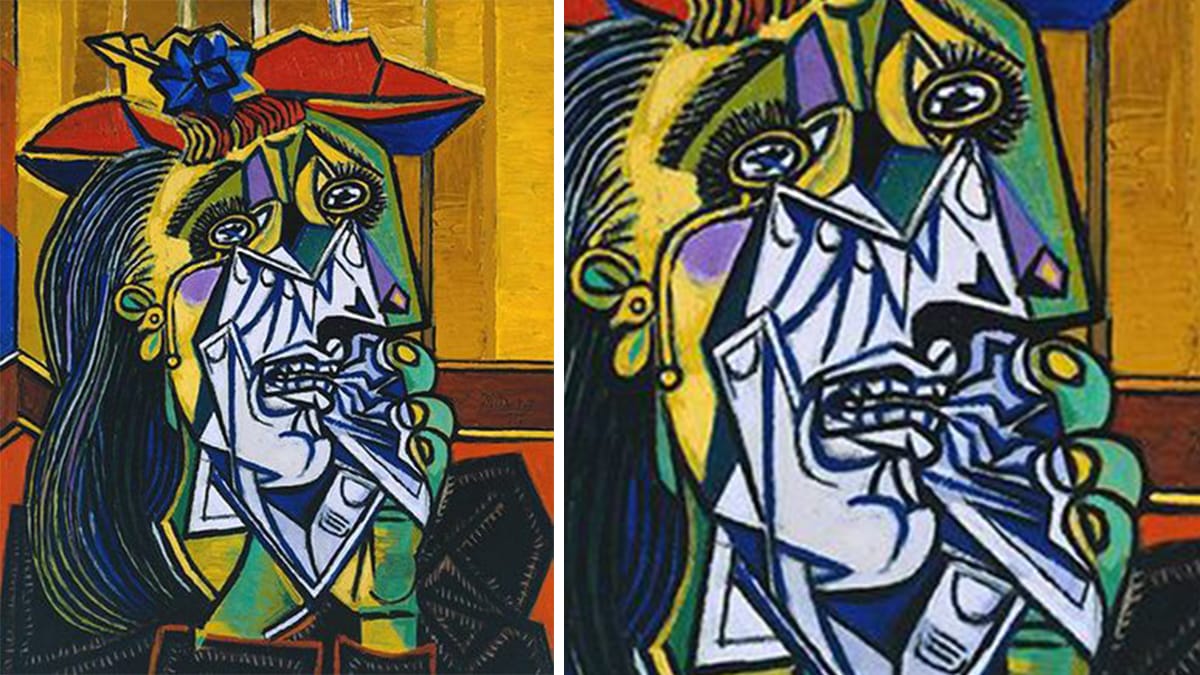
This painting by Picasso was created during the Spanish Civil War, which took place in July 1936.
This painting marks Picasso’s anti-war mural, which is based on a woman who is suffering the loss of her child.
It is also believed that the muse for this painting by Picasso was Dora Maar, and she occasionally featured in Picasso’s portraits.
Even though we could never experience Picasso’s face in his paintings, he has used the faces of his lovers very well.
She was a victim of Picasso’s violence and anger, as it is known that Picasso struggled with a lot of depression, which led to anger issues.
Hence, Dora Maar was the lady who got under the radar of Picasso’s violence, and it is supposed that because of this, Picasso painted the weeping woman.
This painting was believed to be one of Picasso’s last and now hangs in the collection of Tate Modern, London.
Paintings from the Surrealism Period
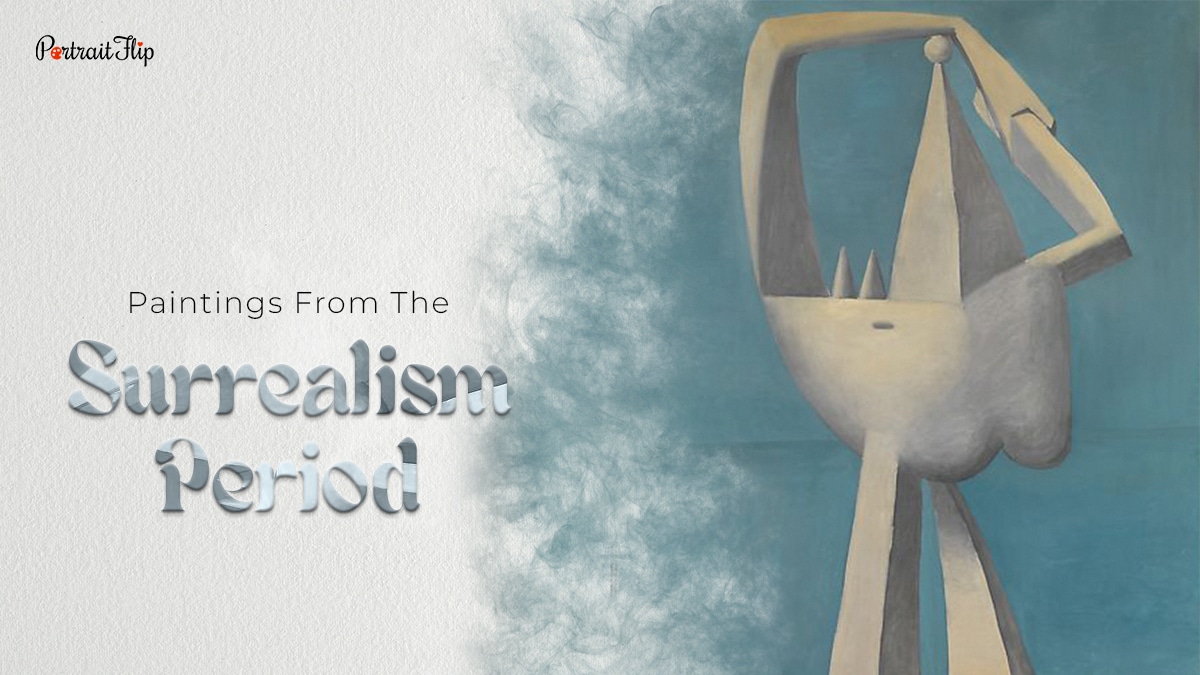
When Picasso visited Italy for the very first time in his life in 1917, he was immediately awestruck by the patterns and art there.
He went head on with other artists and tried to follow them, as he wanted to bring the classical themes of painting back to life.
Even though he started working on his paintings with the full effect of Surrealism, he never fully adopted the style.
He used the concept of surrealism to bring life back to his canvas. He also portrayed violence and primitivism in his paintings.
Here are some of Picasso’s famous paintings from the era of Surrealism.
1. Nude Standing by the Sea
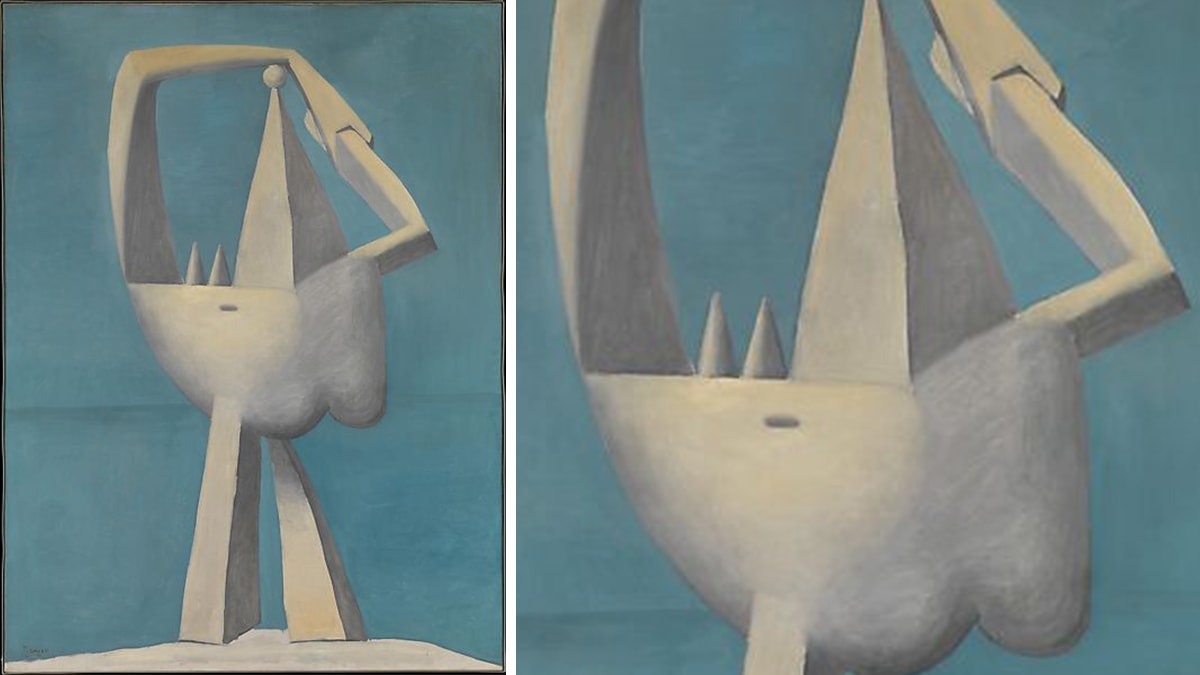
Picasso, along with Georges Braque, made some of the most intriguing paintings of cubism throughout his career.
Picasso was considered an influential artist and painter because he never hesitated to try things that had never been tried and done before.
In this Picasso abstract, he has drawn a disproportionate and morphed woman who is standing on the seashore.
It is a brilliant example of Surrealism by Picasso.
At first glance, it almost looks like a minimalist painting, but when you look closely, you understand the intricate details.
In this painting, Picasso has used two tones of color, and it is easy to say that the blue and white hues departed from his blue period.
This painting is now housed in the collection of MoMA in New York, USA.
2. Corrida: la mort du torero
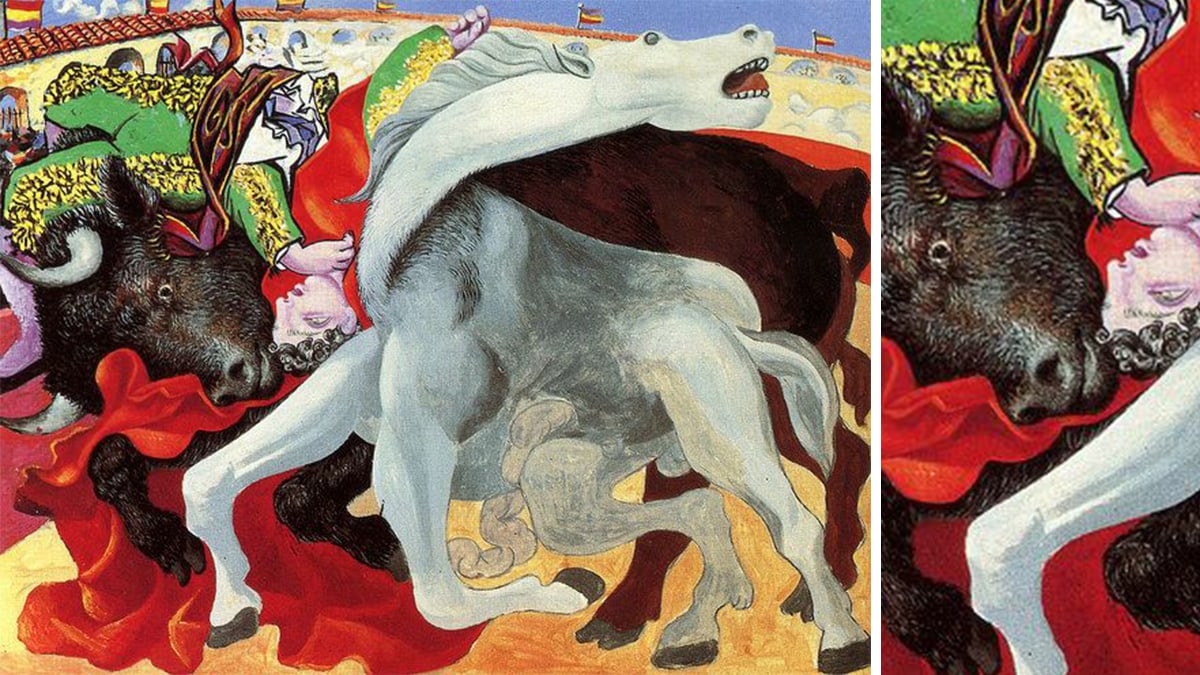
In this painting, Picasso’s experiment for the canvas is evident, as we can clearly see that he has used a spectrum of color palettes.
Also, this painting features a bullfight, which is Picasso’s favorite thing to do and paint as well.
In a lot of his famous paintings, the bull always remained a recurring subject element.
Picasso would often spare time to go watch bullfights and even try to participate in them.
But as time went by, his duties and responsibilities increased, and as a result, he stopped attending them.
Taking inspiration from outdoor events, he drew this painting and shared his experience with the rest of the world.
On a closer inspection of the painting, we can also see a red cape amid the bull and the horse.
The red cape is believed to represent the bloodshed and the death of the fighter who participated in the bullfight.
It is believed that the cape represents a pool of blood and represents the death of the fighter who was channeling the bull.
This painting by Picasso can now be found hanging in the Musee National Picasso.
3. Woman with a green hat
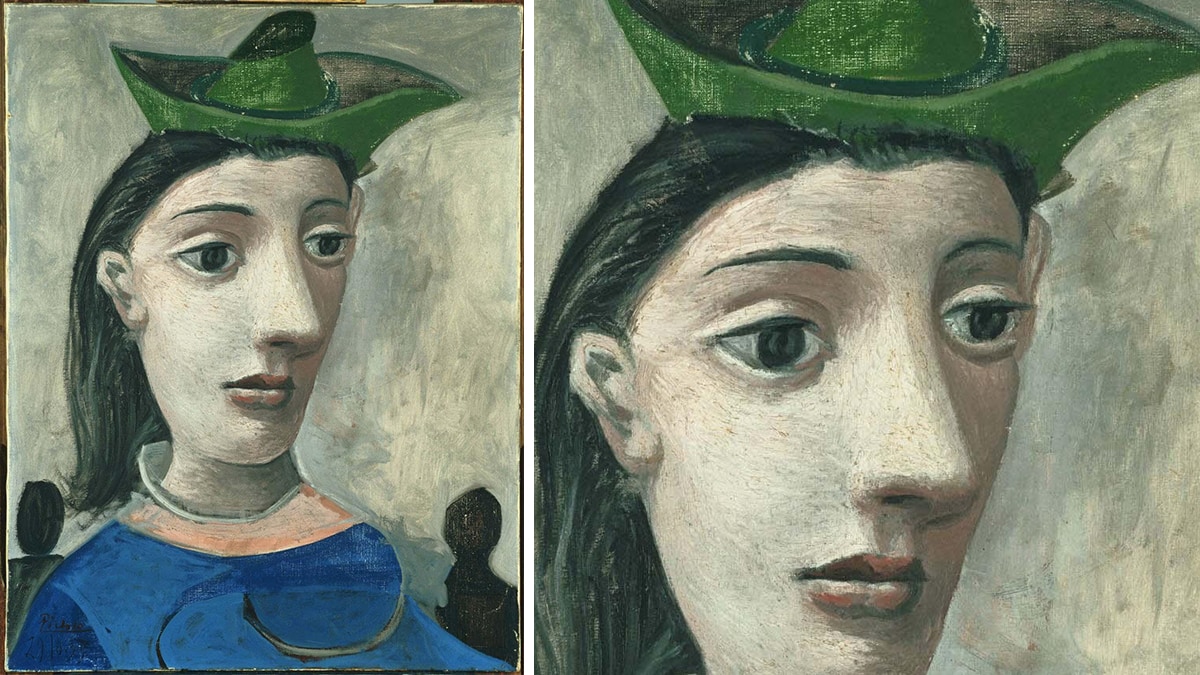
This painting depicts the hardships in Picasso’s life and is one of his most famous paintings of women.
Not many portraits by Picasso were in the limelight, but with time, they rose to fame.
A lot was going on in his personal life that was affecting him on a professional and personal level.
It was a hard phase for him when he had just divorced his wife, Olga Khokhlova.
His mistress, Marie- Therese Walter, had given birth to their daughter, Maya.
Amid so much happening with him, he was losing his artistic focus, and his mental health was also declining at a rapid pace.
Dora Maar was Picasso’s biggest companion, muse, model, and even mistress before World War II.
From Picasso’s early life portraits and depictions, we can see that whenever he created Dora Maar, he would keep her face distorted.
The uncharacteristic sculptural form of Picasso’s creation depicted his interest in non-western cultures.
This painting later became a part of the Phillips collection, Washington, DC, USA.
Conclusion
This was about the masterpieces created by the legendary painter Pablo Picasso.
His life was rocky, but he made sure that his art would always be well-received and noticed.
Paintings by Pablo Picasso have been gaining immense popularity among viewers all over the world.
Picasso used to say that, “painting is a blind man’s profession”. He felt like an artist paints what he feels, not what he sees.
Despite his art being called ‘odd’ and ‘degenerate’, he still continued creating his art pieces.
Paintings by Picasso make me feel motivated, and they help me see life from a different perspective.
Do these paintings tempt you to get one or more artworks by Picasso?
I mean, wouldn’t you like a well-framed masterpiece by Picasso hanging in your living room?
And, we assure you that the replica of your selected artwork is handmade with perfection and will be worth-it all!
You can explore paintings on our website and order them in a few easy steps!
Then, don’t worry, we’ve got you covered!
You can have one remade just for you by our professional artists! Meanwhile, you can take a look at what we have in-house for you!
Author’s Note
Thank you for reading this article about paintings by Picasso.
I have tried to compile the incidents and information that revolve around this famous artwork by Picasso.
I feel glad and appreciated when you guys leave your valuable feedback in the comments section, so please don’t forget about that!
Also, we would love to connect with you, so say hi to us via the leading social media platforms, such as Instagram, YouTube, and Pinterest.
Ciao!


